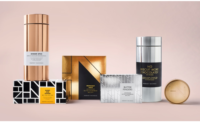Balancing Luxury & Sustainability with Today’s Subscription Boxes

From treasure troves of art supplies to health care kits, curated cocktail sets and goodies to surprise your pup, subscription boxes have boomed in recent years — reaching a global market value of $18.8 billion in 2020, according to IMARC Group, a market research consultancy. And further, the market is expected to grow by 20.1% over the next five years as a diverse spectrum of industries and consumers continue to embrace these boxes.
There's no question why: at the intersection of convenience, predictability, and originality, subscription boxes offer consumers a thrill that keeps on coming — and with a bit of strategic and creative thinking, there isn’t any consumer-facing industry that can’t tap into this growing trend.
However, CPGs must consider the boxes themselves, not just what goes inside them. Subscription boxes require packaging at scale and on a recurring basis, and it can be a challenge to offer a premium unboxing experience while producing a green-friendly, cost-effective box. As the buzz around subscription boxes burgeons, it is critical to consider ways to steer this trend toward sustainability to evade consumer concern on the environmental impact of their new favorite way to treat themselves.
Conventional thinking would suggest that luxury and sustainability are mutually exclusive. However, this may be a limiting perspective compared to the entire scope of sustainability — and brands should strive to make luxury and green-friendly packaging coexist in the mind of the consumer. Here are three ways to start:
Banish Long-Standing Sustainable Perceptions by Considering the Big Picture
Manufacturers should challenge themselves to focus on a comprehensive sustainability analysis of producing the box versus consumer perceptions of what they believe to be ‘green-friendly.’
Oftentimes, packaging can look sustainable but may have additional features added that make it non-recyclable, or may take extra steps to be recycled (poly windows or foil embellishments, for example). Brands should also keep in mind the production of the box: the raw materials, energy usage, waste creation and labor costs.
All producers, but especially those whose brand persona focuses on being sustainable, must consider the realistic impact of the entire process. To illustrate, consider the eco-fashion trend of cotton tote bags, which had become a tool to imbue a planet-friendly brand image for years. Now, the fad is seeing push-back as a recent New York Times article unveiled an organic cotton tote needs to be used 20,000 times to offset its overall impact of production. Leaning toward what is perceived as sustainable instead of what is actually sustainable may, in the long run, hurt brands.
Recognize the Potential for a Package’s Second Life
Oftentimes manufacturers believe the job is done when a consumer opens the box. Instead, it is important to reflect on how to add value to packaging so it takes on a second life — rather than being immediately discarded. Doing so can make the packaging a direct extension of the product itself.
Take, for instance, tech product packaging. How many of those boxes live on consumer desks, bookshelves, and coffee tables? We tend to keep boxes that we believe can be reused — and the higher quality, aesthetically-pleasing, and utility-lending the packaging, the more the consumer will think twice before tossing it away.
A potential use-case of this could be seen for sunglasses manufacturers whose packaging lends itself nicely to doubling as a case consumers can use to store their specs. A durable case will most likely live on with the consumer, which enhances the brand experience and overall sustainability of the product.
Get Creative with Print
All in all, once the raw materials are in and the sustainability of the product is no longer in question, brands can consider how to spice up the packaging with printing and finishing.
Add a flourish of color or gloss to a kraft box or fully customize with vibrant graphics to convey any level of elegance, simplicity, or fun. Consider a soft touch coating or metallic finish, all of which can be achieved sustainably. All of this creative branding on the packaging highlights the quality of the product in a way that has less of an impact on a product’s sustainability. To maximize creativity, brands should consider working with a packaging supplier that can analyze their needs and better identify a solution that not only factors in sustainability, but delivers that luxurious appeal.
Subscription Boxes are a Balancing Act
As subscription boxes continue to resonate with today’s consumers, brands must be mindful of how they can continue to deliver the extraordinary experience their consumers have grown to expect, while creating a more conscious package. To manage the delicate balance between sustainability and luxury with ease, subscription box brands should consider working in close collaboration with partners who take a holistic approach to production from start to finish.
Quality and sustainability can co-exist in the same packaging — but it requires thinking outside of the box.
Looking for a reprint of this article?
From high-res PDFs to custom plaques, order your copy today!






